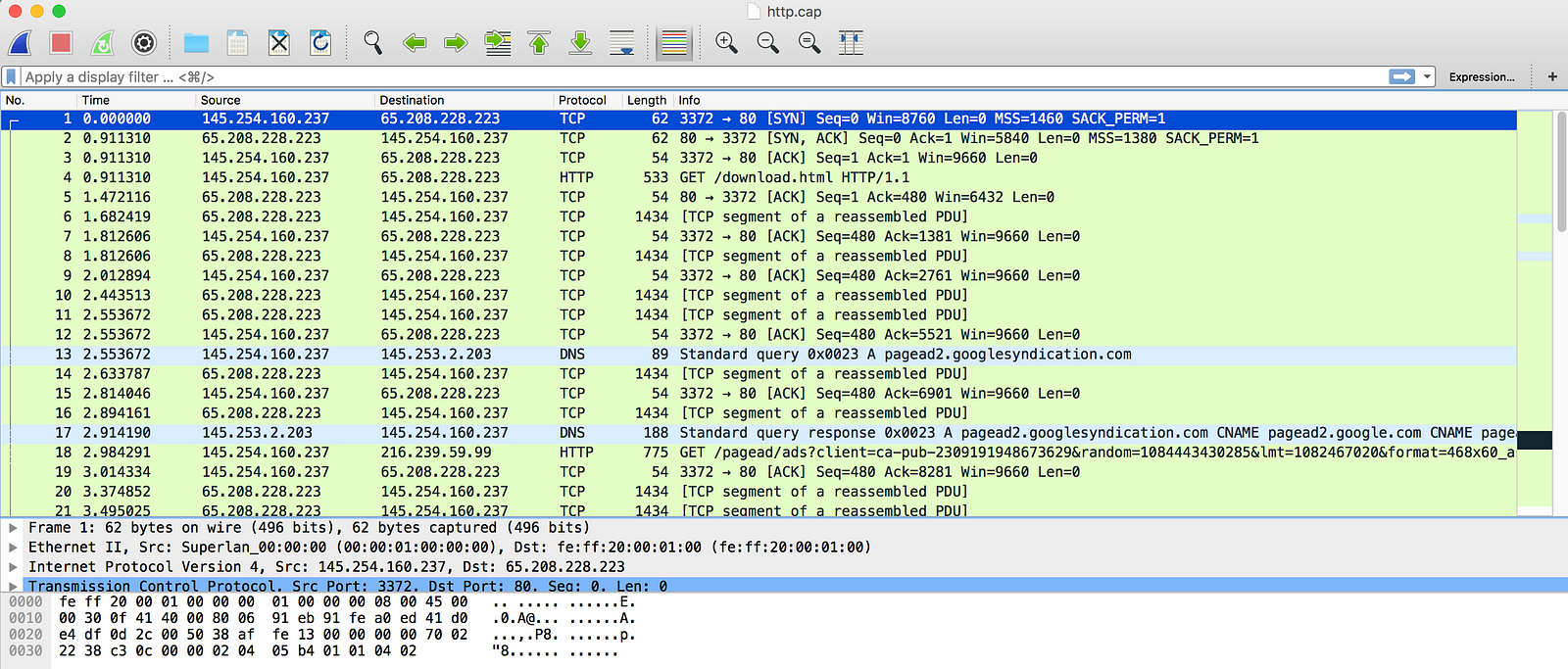
These headers are under the control of the user and are intended for use by the server, so they can be modified by an attacker who controls both ends of the connection, making them ideal for passing data during an attack. This includes the requested URL and a variety of different HTTP headers, including the host, user-agent and several others.

The image above shows the structure of an HTTP request in Wireshark. Wireshark reassembles all of the actual data packets containing a particular webpage and displays it within the packet labeled as the HTTP response. However, since HTTP runs over TCP and http only shows packets using the HTTP protocol, this can miss many of the packets associated with the session because they are TCP packets (SYN, ACK and so on).


HTTP traffic shows up as a light green in Wireshark and can be filtered using http.


 0 kommentar(er)
0 kommentar(er)
